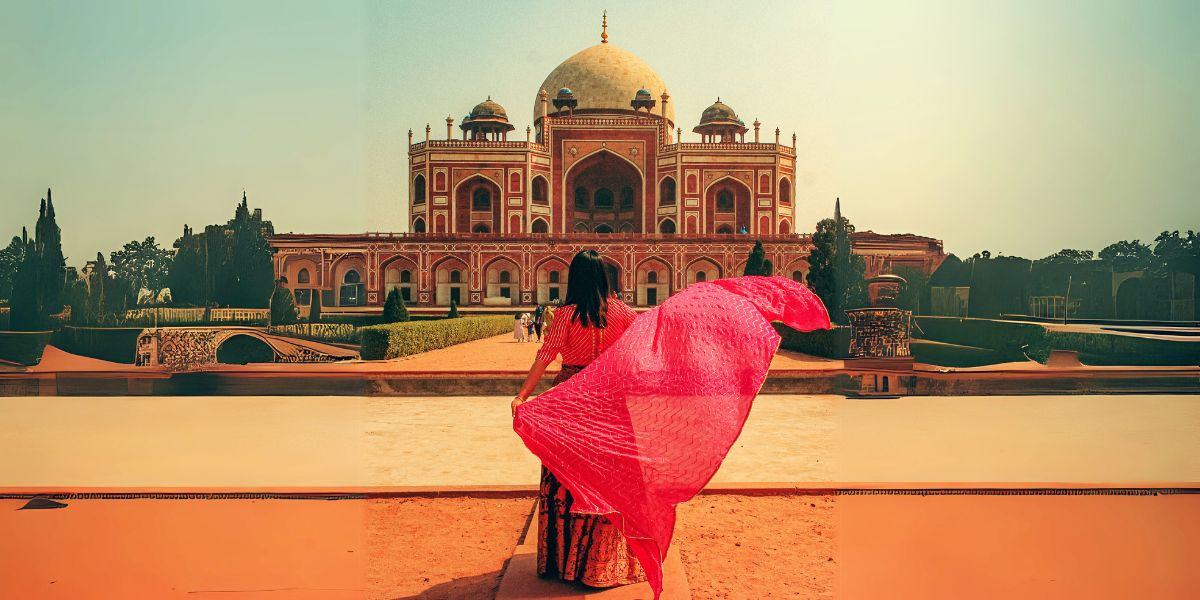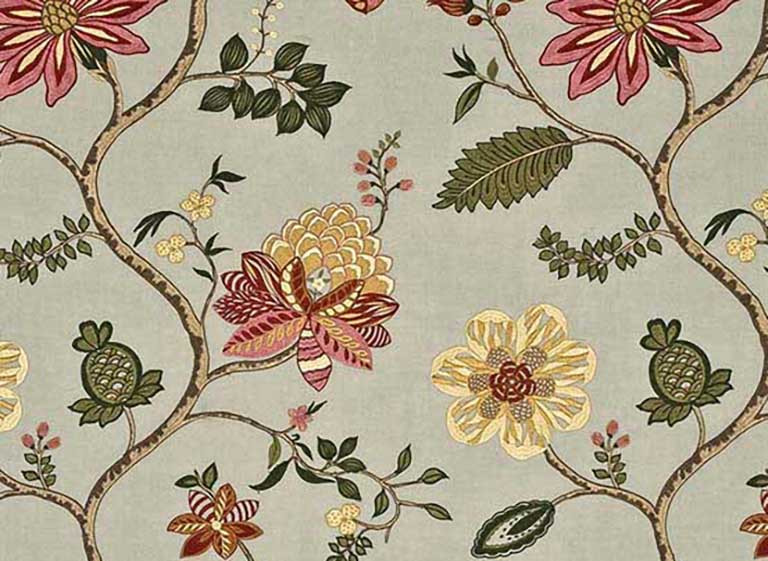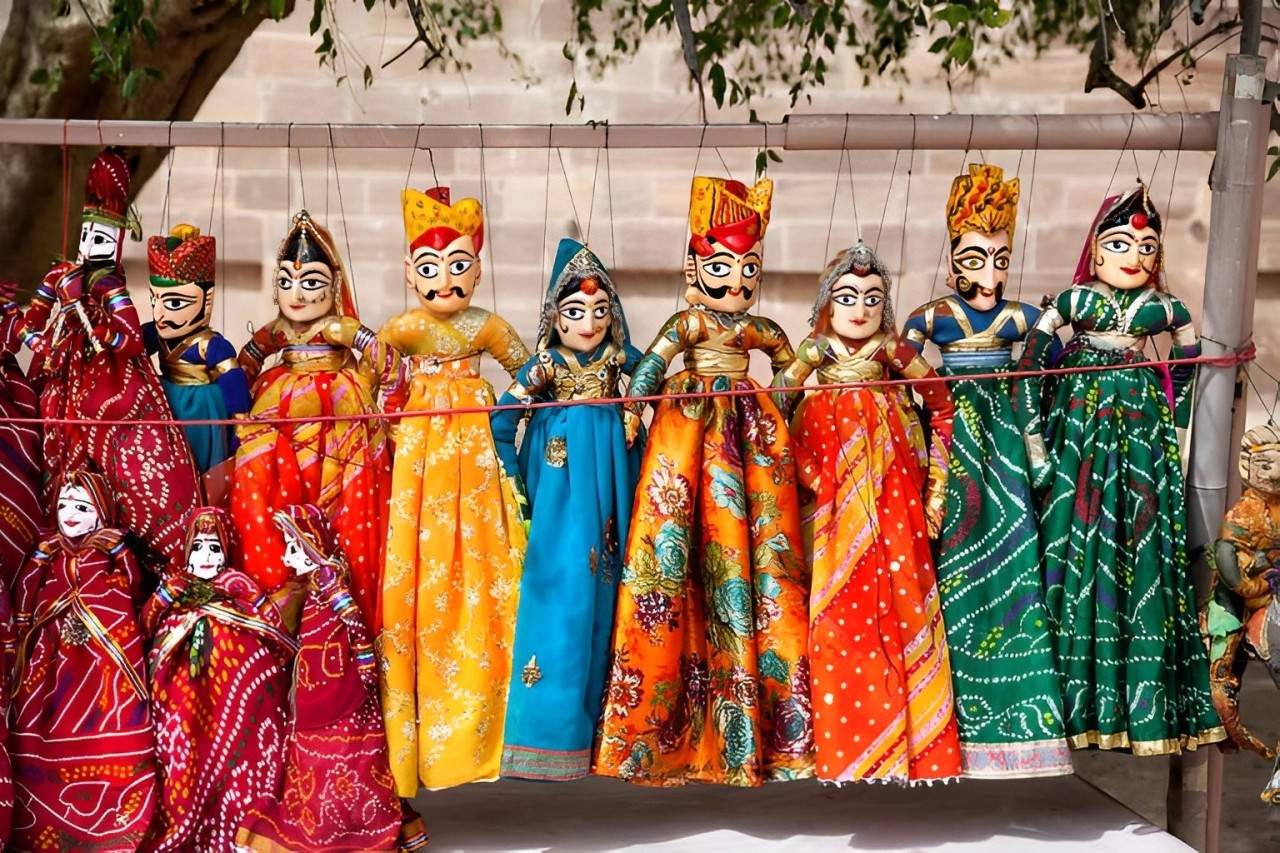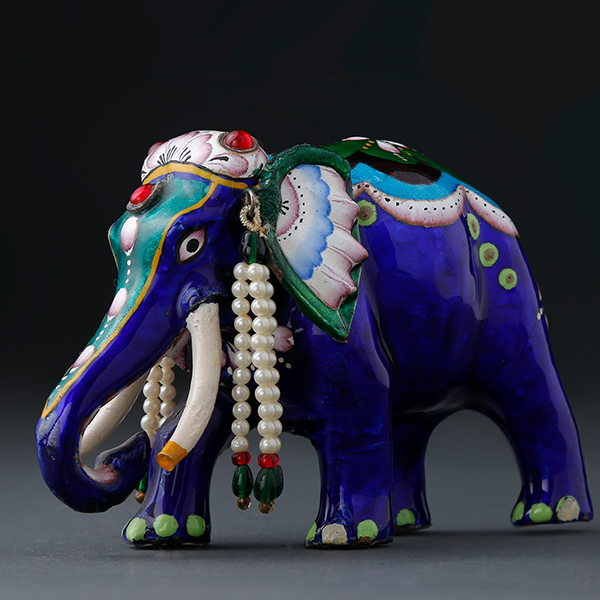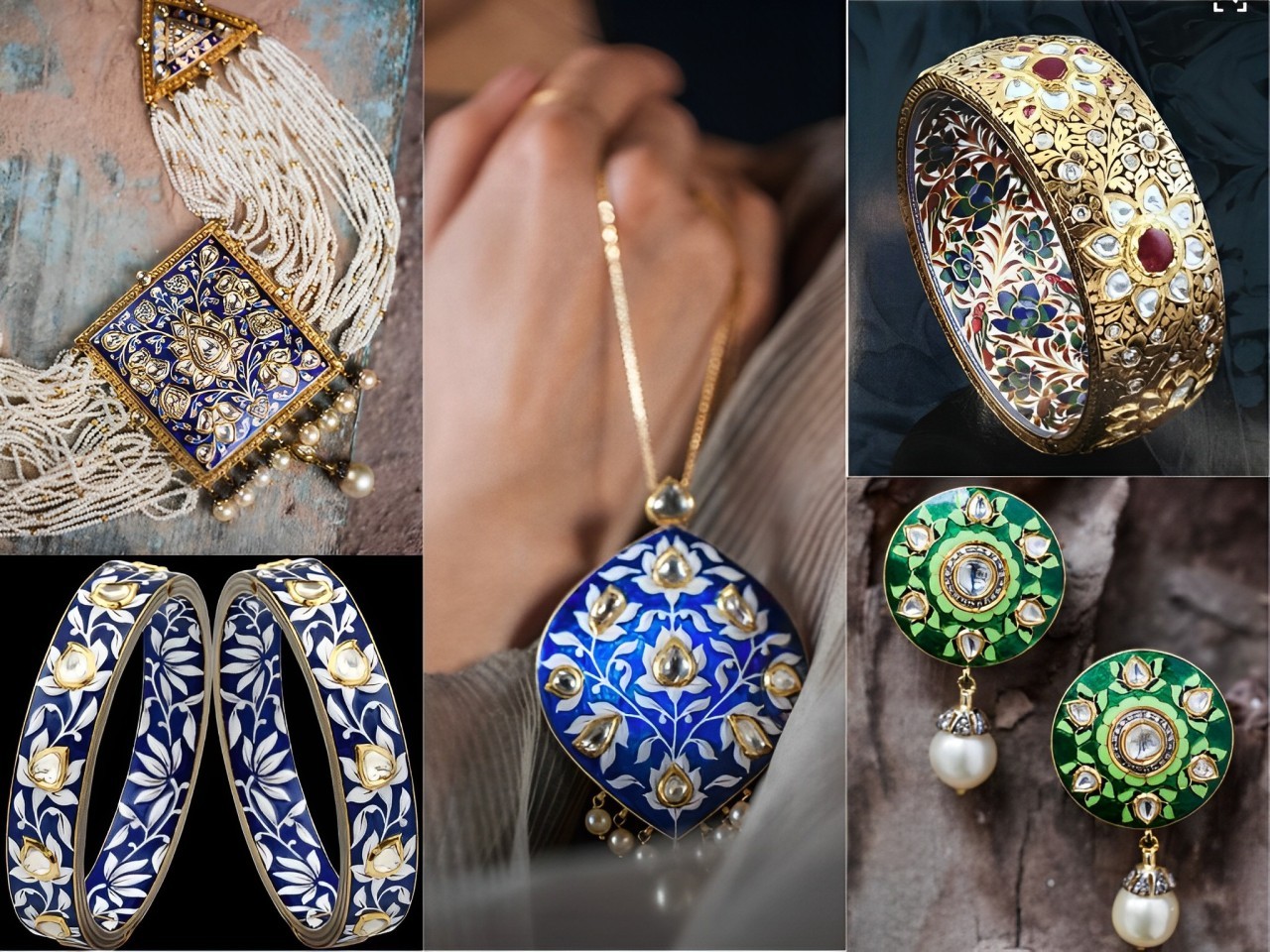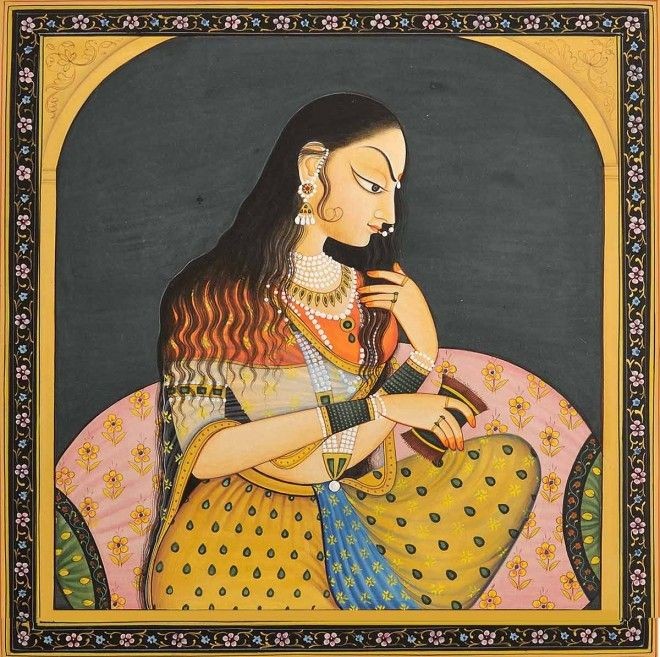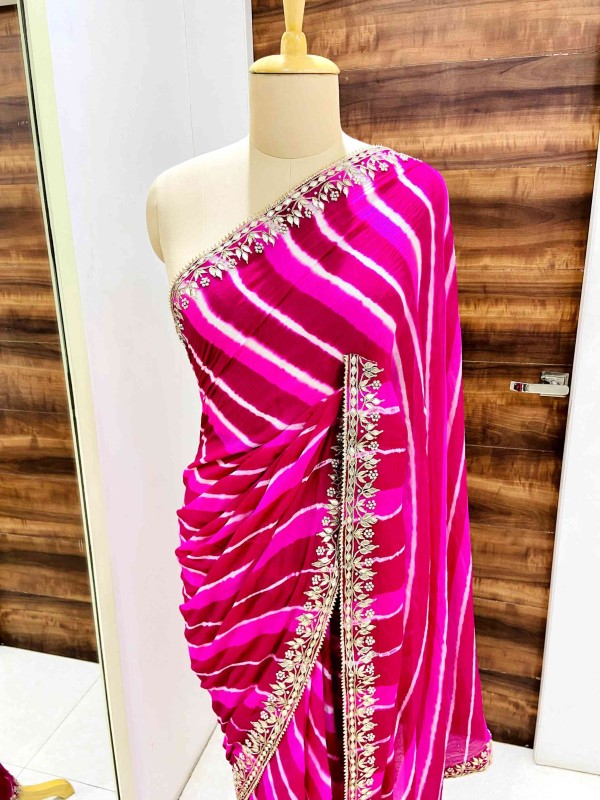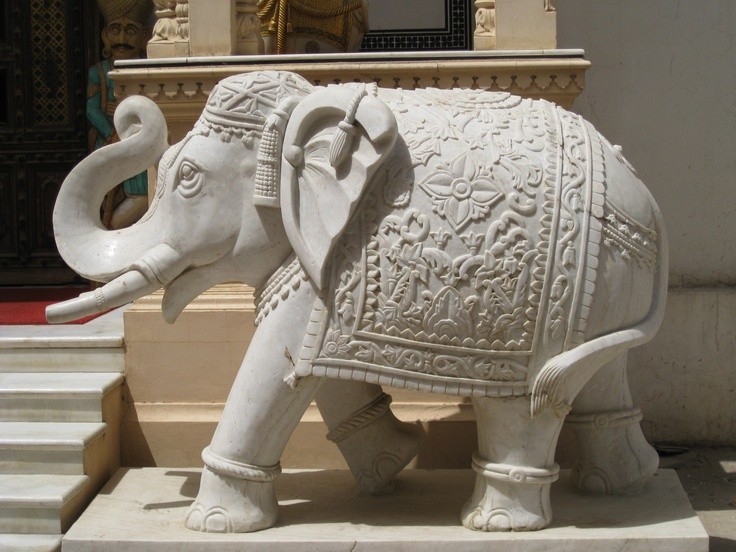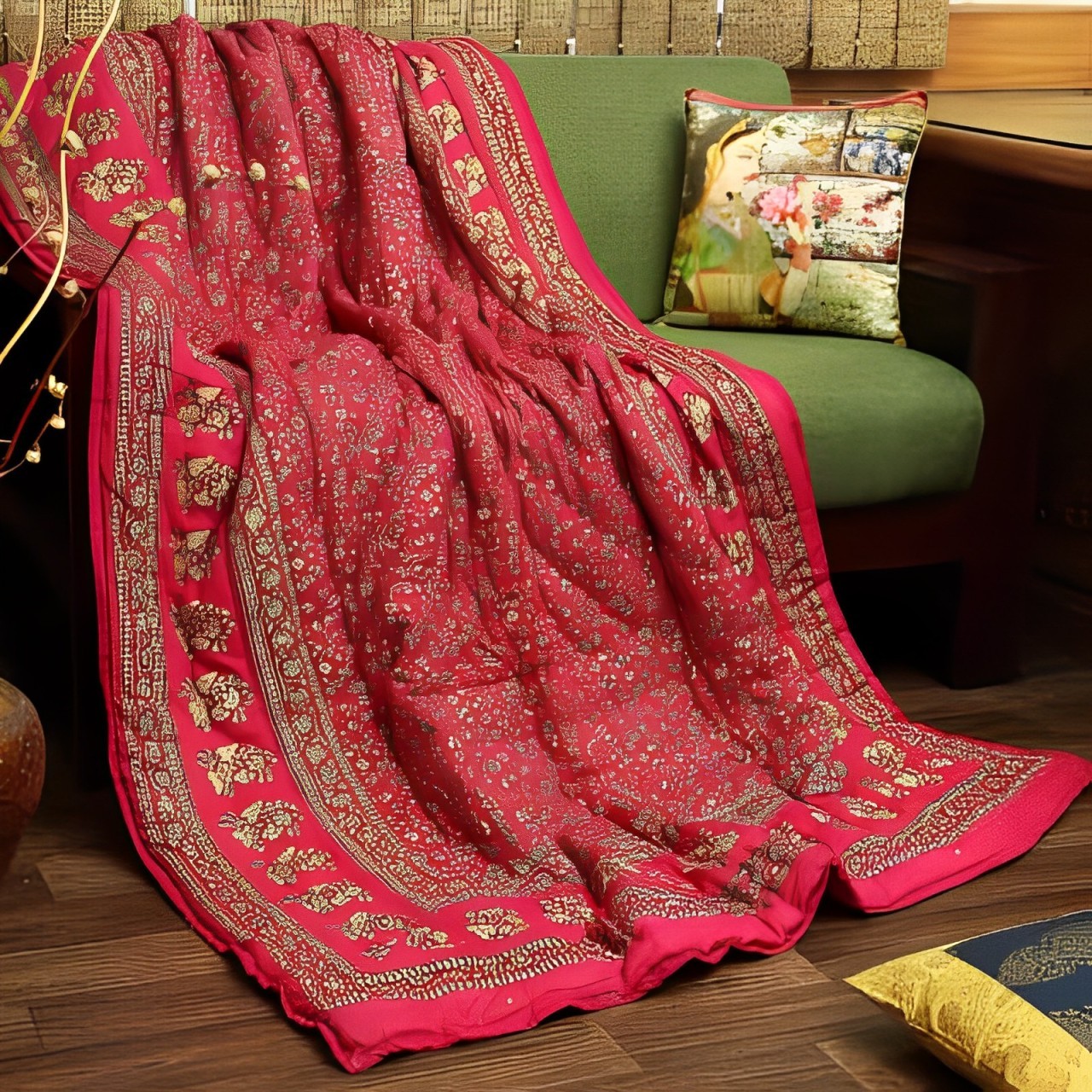Bandhani

Introduction
Bandhani is a type of tie-dye textile decorated by plucking the cloth with the fingernails into many tiny bindings that form a figurative design. The term bandhani is derived from the Sanskrit verbal root bandh "to bind, to tie". Today, most Bandhani making centres are situated in Gujarat, Rajasthan, Sindh, Punjab region and in Tamil Nadu where it is known as Sungudi. It is known as chunri in Pakistan. Earliest evidence of Bandhani dates back to Indus Valley civilization where dyeing was done as early as 4000 B.C. The earliest example of the most pervasive type of Bandhani dots can be seen in the 6th century paintings depicting the life of Buddha found on the wall of Cave 1 at Ajanta. Bandhani is also known as Bandhej Saree, Bandhni, Piliya, and Chungidi in Tamil and regional dialects. Other tying techniques include Mothra, Ekdali and Shikari depending on the manner in which the cloth is tied. The final products are known with various names including Khombi, Ghar Chola, Patori and Chandrokhani.
Technique
The art of Bandhana is a highly skilled process. The technique involves dyeing a fabric which is tied tightly with a thread at several points, thus producing a variety of patterns like Chandrakala, Bavan Baug, Shikari etcetera; depending on the manner in which the cloth is tied. The main colour used in Bandhana are yellow, red, blue, green and black.
The main colours used in Bandhana are natural. As Bandhani is a tie and dye process, dying is done by hand and hence best colours and combinations are possible in Bandhanis.
The Bandhani work has been exclusively carried out by the Khatri community of Kutchh and Saurashtra. A meter length of cloth can have thousands of tiny knots known as 'Bheendi' in the local language 'Gujarati'. These knots form a design once opened after dyeing in bright colours. Traditionally, the final products can be classified into 'khombhi', 'Ghar Chola', 'Chandrakhani', 'Shikari', 'Chowkidaar', 'Ambadaal' and other categories.
Ahmedabad in India is known for Bandhanis. Bandhani work is also done in Rajasthan state but having different types of colours and designs than the Kutch and Saurashtra of Gujarat. Establishments of varying sizes in the entire Kutch belt in Gujarat produce many varieties of Bandhani. This Bandhani style is called as the Kutchi Bandhani, which is also practised in the Sourasthra region of Gujarat. Bandhani tying is often a family trade, and the women of these families work at home to tie patterns. Mandavi, Bhuj, Anjar, Jamnagar, Morbi, Rajkot, Deesa are some of the main towns in Gujarat, where Bandhani is created. The city of Jamnagar, located in the Gulf of Kutch, in Gujarat is well known for its red Bandhani. Dyeing process of Bandhani is carried out extensively in this city, as the water of this area is known to give a particular brightness to colors, specifically reds and maroons.
Application
Bandhani is being sold all over India and the demand has increased over the past few decades. Sales go up during the festive and wedding seasons in India. The bulk of the market is domestic with the main market being in Gujarat and Rajasthan.
Cultural Meaning behind different colours
The main colour used in Bandhana are yellow, red, blue, green and black. Each colour is traditionally tied to specific cultural meaning.
- Red is a symbol of marriage and is connected to rituals of married women.
- Yellow stands for spring and is connected to both the season and childbirth.
- Saffron is the colour of renouncer of the world and connects with warriors ready to give up their life in war or to yogis who give up worldly life.
- Black and maroon are used for mourning.
Origin
Earliest evidence of Bandhani dates back to Indus Valley Civilization suggest that dyeing was done as early as 4000 B.C. The earliest example of the most pervasive type of Bandhani dots can be seen in the 6th century paintings depicting the life of Buddha found on the wall of Cave I at Ajanta. This art finds its mentions in the Alexander the great time texts about the beautiful printed cottons of India. As per evidences in Historical Texts, the first Bandhani saree was worn at the time of Bana Bhatt`s Harshacharita in a royal marriage. It was believed that wearing a Bandhani saree can bring good future to a bride. Ajanta walls stand for the evidences of these Bandhani sarees. The dyers have experimented with the use of different elements both natural and man-made for ages. Also, there are experiments with different binding / tying techniques to create patterns on cloth immersed in containers of dye. Different types of tie and dyes have been practiced in India, Japan, and Africa for centuries. Tie-dye became fully developed in China during the T`ang dynasty (618-906 A.D.) and in Japan during the Nara period (552-794 A.D.).
Bandhani work in India was started by the Khatri Community of Gujarat the term `Bandhani` is derived from the word `Bandhan` that means tying up. It is an ancient art practise that is mainly used in the state of Gujarat and Rajasthan. Some 5000 years ago Indian Tie & Dye or Bandhani was started. Places in Rajasthan like Jaipur, Sikar, Bhilwara, Udaipur, Bikaner, Ajmer, and Jamnagar in Gurjarat are the well-known centres producing odhnis, sarees and turbans in Bandhani. Different communities in Rajasthan have for ages followed the tradition on tying turbans with different patterns of bandhani on their heads. These were used to identify which community the person belonged to.
Bandhej Saree
Bandhej saree which is also known as "Bandhani saree" is specially found in Gujarat and Rajasthan. As per the region of manufacturing the patterns of Bandhej saree may vary. Fine varieties of Bandhej are created in Pethapur, Mandvi, Bhuj, Anjar, Jamnagar, Jetpur, Porbandar, Rajkot, Udaipur, Jaipur, Ajmer, Bikaner, Churu etc. They are considered prized possessions of married women and are mostly essential part of traditional bridal trousseau. In Rajasthan and Gujarat, Bandhani fabrics are very popular with men and women but bandhani saree from a ritual necessity for married women for many ceremonies. Many Gujarati brides wear Gharchola, a type of Bandhej saree, for their weddings. Though Gharchola literally means "robe for home", in ritual parlance, it means "attire for the new home or the home of the husband" and is usually a gift to the bride form her mother-in-law. In Rajasthan, during pregnancy or childbirth, the natal home gifts the women peeley ki saree. It is a combination of yellow base with a broad red border with bandhani pattern on it.
Bandhani, one of the oldest known methods of tie-dyeing, is still widely practiced in western India today. The fabric is made by pinching very small portions of cloth and tying them by plucking the cloth with the fingernails into many tiny bindings that form a figurative design to form an intricate pattern of dots. The cloth is then placed into different dye vats to form bright and beautiful colours.
What materials are used to create Bandhani?
Artisans usually start with white, unbleached fabric. Thick cords are used to cast designs, using Geru mixture (red/ orange earth mixed with water). These days, design stencils made of stiff plastic sheet are also used. Bandhani is tied using thick, impermeable cotton strings. Dyes, many of them natural and eco-friendly, of various kinds are used in Bandhani. Big utensils are used to create dye solutions.
Which fabrics are used in Bandhani?
Traditionally, fine mill-made cottons or muslins were used to create Bandhani. The contemporary artisans, given the changing preferences, also work on fine georgettes, art silks, silk-cotton blends, viscose and cotton variants. Pure Venkatigiri cotton, sourced from Andhra Pradesh, is used to create traditional Gharcholas. Georgettes with pure Banarasi brocade borders are used to make vibrant and colourful, high-end Jhankaar Bandhanis.
Types of Bandhani Patterns?
A single Bandhani dot is called as Ek Dali or Bundi, four are called as Chaubundi and seven are called as Satbundi. Small dots with darker centres are called as Boond, while tear-drop shaped dots are called as Kodi. Patterns or circles appearing in clusters of three are called as Trikunti, while groups of four are called as Chaubasi, and seven are called as Satbandi. Elaborate motifs and designs of leaves, flowers, trees, human figurines are made, by repeating Bandhani dots and patterns. Dungar Shahi (mountain pattern), Laddu Jalebi (Indian sweetmeats) and Leheriya (waves) are other popular Bandhani patterns.
Types of Bandhani Sarees?
- Jhankaar Bandhani – Bandhani type that is very colourful and vibrant, and has extremely fine, patterns. Jhankaar Bandhani doesn’t have light or white coloured dots, present in other Bandhani styles. For example, an all-green Jhankaar Bandhani will have red or maroon dots.
- BorJaal – Used mostly for Wedding Bandhani Sarees. This highly intricate and fuller Bandhani, as the name suggests (jaal or web), is quite popular among Marwari communities. Sarees with BorJaal Bandhani have a striking inter-play of colours and dots, creating an amazing maze. They are available in many colours, and are also made in georgettes.
- Colour Discharge Bandhani – Typically, Bandhani is created by using darker colours over lighter ones. However, in the colour discharge technique, this effect is reversed - lighter colours are visible over darker coloured dot patterns. In such a Bandhej, you will see deep red dots on a pale-yellow base. Striking! This is achieved by discharging darker hues.
Process of Making Bandhani
Step 1 - Printing: In Bandhni Art many fabrics can be used like cotton, silk, wool, nylon. Fabric is to be spread on wooden table and a thin transparent sheet of plastic is placed, which has pin holes over the dyed area of the fabric. Artist uses ‘Gheru’ or red oxide mixed with water to make the design patterns of dots. Then, the plastic is taken off the table.
Step 2 - Tying: Now imprinted fabric is given to the Bandhni craft person. They use their fingers and thumb to tie knots. The decorative designs indicated by artists are sized and skilfully tied with thread.
Step 3 - Dying: After the knots have been tied, the small portion of fabric is covered by water proof material as per the colour selections. Covered fabric will resist the dyeing colour.
Then fabric will be dipped into hot water. Colour will be added in the water. Artists’ uses wooden stick or hand gloves to soak the fabric in hot water. The small area below the thread resists the dye, thereby, leaving an undyed dot. The entire process is usually executed in several stages, which starts from a light colour and gradually moving to a darker one.
Step 4 - Rinsing: Then the fabric is rinsed in plain water to remove the colour impurities and again washed into the corn flour water to make the fabric soft.
Step 5 - Drying and Opening of Knots: Fabric will be dried in sunlight. Dry fabric is ready to use but before that Artist stretched the fabric to remove knots. All the knots will get removed by stretching them and beautiful colour dots of numerous patterns will be created.

